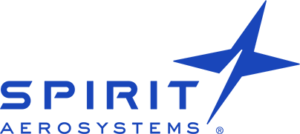Leeham News and Analysis
There's more to real news than a news release.
Supply chain stress, number of variants challenge 737 production rate hike
March 27, 2018, © Leeham News: Current production rates and complexity in the transition between the Boeing 737 NG and 737 MAX is straining the supply chain  feeding Spirit Aerosystems, its CEO told a JP Morgan conference March 14.
feeding Spirit Aerosystems, its CEO told a JP Morgan conference March 14.
The supply chain stress makes it challenging to increase production rates. Spirit, which builds the 737 fuselage for Boeing, deployed SWAT teams to key suppliers that are struggling.
Tom Gentile, Spirit’s CEO, did not name the suppliers.
Boeing is going to a production rate of 52/mo this year and 57/mo next year. The company is studying rate hikes up to 70/mo.

The supply chain and production will be among the topics at the Southeast Aerospace & Defence Conference June 25-27 in Mobile (AL).
737 Variants
As Boeing transitions from the 737 NG to the 737 MAX, the supply chain, and Boeing, are dealing with a plethora of variants.

Tim Gentile
There’s the 737-700 (there are only four left to build at February 28), the 737-800 (279 plus 40 -800-based P8As) and -900ER (59). There are three NG-based BBJs.
There are more than 4,200 MAXes in the -7, -8, MAX 8-200, MAX 9 and soon, the MAX 10.
The transition from the NG to the MAX won’t be complete until sometime next year.
“There’s tens of thousands of different parts that we put together for the 737 and we have some 600 suppliers,” Gentile told the JP Morgan conference. “It’s fair to say that the suppliers experienced some difficulty going up in rate and that created some disruption in our factories in the fourth quarter.
“We’ve put a lot more people out into the supply chain, working with the suppliers to ensure that they can get up to rate and to smooth it out,” he said.
Surge
Gentile said Spirit put “surge resources” into the system during the first quarter, which is just ending.
“We feel like we’re on track overall,” he said. “One of the things that we learned last year is that we need to hire more in advance to get the rate up.”
Gentile said Spirit “significantly improved and enhanced” the training program, working with local technical colleges to improve training so new hires are better prepared.
SWAY teams were deployed to more than a dozen suppliers to help resolve issues.
“From our standpoint, it’s all about the supply chain,” Gentile said.
Automation
Spirit is also upping its game on automation to improve efficiency.
The company is consolidating a 500,000sf warehouse to 160,000sf, “so we get massive improvement, which will help us go up in rate,” Gentile said.
Increasing the productivity out of the existing campus and improving productivity of the workforce is critical to increasing production rates.
NMA
Gentile said one of the main drivers for Boeing to proceed with the New Midrange Aircraft will be getting cost out of the supply chain.


An industry bully will always have issues releasing synergies.
Even with looming engine issues Airbus is able to increase production while moving from CEO to NEO.
Still sore over losing that AA order to the 787, I see.
Has the 350 orders been cancelled?
@Anton: Soon.
Thanks Scott. Let it get over and done with and every body can move on.
In generally it’s long lead items like engines, landing gears & APU that are critical.
About getting NMA cost out of the supply chain, it is two sides of the coin. You need the suppliers to do large investments; development, certification, production and aftermarket guarantees. If they can’t close their business cases, they won’t offer. Specially the high tech crucial ones.
Boeing is worried by e.g. UTC (Rockwell, Goodrich, PW, BEA) making offers they can’t refuse. Squeezing UTC, Spirit, Safran or GE is a different ball game then a smaller dependent supplier.
Certainly against a background of large stock buy backs & extreme executive salaries. Credibility is important at this stage.
“From our standpoint, it’s all about the supply chain.”
Everything is summarized in this sentence and it could be extended to the engine production as well. LNC quite rightly puts the focus on manufacturing issues and production costs. IMHO it’s much more a subject of concern (for both A &B) than the dogfight about measly orders from Hawaian or AA. In other words, it’s easier to overcome the loss of a sales campaign than production issues. Lots of examples in the past : A380 (wiring), 787 (the worst case), A320Neo engines, A350 (Zodiac …), etc…
In the near future; there are many topics to come under close scrutiny about several programs : A320 Neo & 737 Max production rate hike, 777X (including the GE 9X) and the 797 business case which strongly relies on the production cost that Boeing will be able to reach.
Thanks to Scott and Bjorn for their reports about what’s happening inside factories. I’m looking forward to reading the next ones.
Very true, for an “outsider” like me that’s is just an enthusiast that enjoys aircraft and flying it opens new windows.
Its almost like eating a cake, you roughly know how its made but you don’t think where the ingredients have its origin (and I don’t mean the grocery store).
Is CFM (Safran/GE) prioritizing engines to the 737?
It was reported earlier this month that Airbus can’t further increase production due to the lack of engines, while Boeing, with only one engine supplier, can?
IMU one is “now” and the other is “in the future”.
Then again IMU CFM is comprised of two separate sales and production lines?
For one platform they have to fight hard or they loose.
Airbus is looking at increasing production as well.
Two different engine lines and GE is not stupid.
GE is likely a candidate on the NMA as well as clearly on any Airbus counter. As PW is the other supplier on an Airbus counter GE is not going to let them run with the Super A321.
The NG to Max transition with no major delivery delays has been pretty amazing. The 777 production line changes are even greater, but again of course it’s a much lower volume line.
The max is, mostly, engines and a few frame tweaks. Spirits new contract with Boeing last year probably kicked all of this into gear.
Boeing was smart in that they created the third line that was making the MAX aircraft so the transition is in place, experienced staff and can be rolled over to the other two.
Some of the best cross learning is when groups of people work and talk together.
Agree, you can have the smartest plans but only team spirit makes it work.
Boeing is doing the FAL at Renton, its a simple task compared to the factories that create the major assemblies. Spirit does 70% of the 737, with the fuselage mostly pre stuffed.
Interesting that when I looked back into details of the previous assembly ramp up to 35 pm in 2011
Boeing was talking up an all new single aisle project- ‘Yellowstone’ and even could be a double aisle.
That was clearly a smokescreen as they just did the Max.
Run forward to 2018 are we seeing a repeat smokescreen to cover a more advanced 737.
This has a very good day by day description of FAL
https://airwaysmag.com/uncategorized/inside-boeings-737-renton-factory-as-they-take-it-to-the-max-part-two/
You’re incorrect that fuselages from spirit arrive pre-stuffed. They are nothing more than aluminum shells. Systems installation happens in Renton in the FAL building adjacent to the moving line itself. Not to mention the wings all assembled and systems installed in another building on the Renton site. That’s then all integrated into the final product on the moving FAL after wing body join. The operations in Renton are the heart of the 737 program, hardly a simple afterthought as you suggest.
All of that info is contained in the very accurate and informative article you linked.
dukeofurl:
I think the history would say that Bering was working its way (slowly) up the the 737RS when the then more nimbler Airbus smacked them in the face with the A320 NEO.
They lost a very large order and a key customer to Airbus and gave up and did the MAX out of (urgent need?)
Boeing does seem to dither with its projects. Sometimes good and sometimes bad.
Good leadership can tell when to hold them or when to fold em.
P-8 will continue as a non max so that an interesting twist on continuing PG (previous generation) 737 fuselage and engines.
70 airplanes a month, 800 a year, 1600 combined for Airbus and Boeing, 32,000 over 20 years. If the NMA can do a fifth of that number, that is 6,000 aircraft. I think the NMA space will support an offering from both manufacturers in due time. (that ‘space’ being between 120t and 200t mtow)
Theres a gap in the manufacturers products between single aisle and the A330 and B787 for a reason.
First its cost , 70 planes a month means you can offer a very good price compared to say 5 a month ( Ask Bombardier Cseries about this) secondly the gate width for Cat D ( which for 737 ,A320, Cs100/300 and E195-E2 are all at that limit now)
Airlines would love a new 225 seater that costs in the $70-$90 mill range, fits in the 35m Cat D gate and comes with new technology engines.
Now the reason for the product gap is clearer, its practically impossible. Airbus could meet it by a longer but lighter rewinged ( from the Cseries) A322. Boeing has to work harder to make equivalent changes to the 737 line and an all new product isnt at the right price for customers.
Since ORD is getting reconfigured, they can throw in a few 52m D gates. Or take over FedEx gates by eminent domain for the passengers of the NMA.
A new CFRP wing for the A322, or a new twin aisle when the dust settles?
Once the Cat E ( FAA Gr IV) gates had the 707/Dc8 , the 757 and all thats left now is 767.
As airlines want to maximize gate numbers at critical airports and have all their gates ‘together’ to allow easy transfers, I dont think shunting them off somewhere else will work .
Those airlines with 767s may wish to continue to use those gates but a new Cat E wingspan plane doesnt expand the market to other airlines.
After further research, I think it is code D / group IV at 36m to 52m with a maximum 14m wheel spread.
But point taken, that it may be an oddball gate size.
Gentile has, generally, been pretty upbeat about handling the 787 and 737 requested rate increases. I’m sure he is striking an overall balance negotiating and planning.
https://www.bizjournals.com/wichita/news/2017/11/01/spirit-aerosystems-growth-could-include.html
Fair use:
“As for the existing backlog, Gentile highlighted progress made in relation to production increases, including the step up from 42 per month to 47 per month on the Boeing 737.
While the increase wasn’t without its challenges in the quarter, Gentile said the lessons learned through the process will serve Wichita’s largest employer well when the rate again increases next year to 52 per month on its way to 57 in 2019.
“We learned a lot from this rate (increase) and we will be able to incorporate that for the next rate (increase) next year,” he said. “
Dominic gates has a scoop on another Washington aerospace manufacturer moving jobs out of the PNW. Might be interesting to see a piece on the future NMA and NSA considerations for Boeing given the trends for manufacturing in Washington for the past fifteen years, especially organized labor.